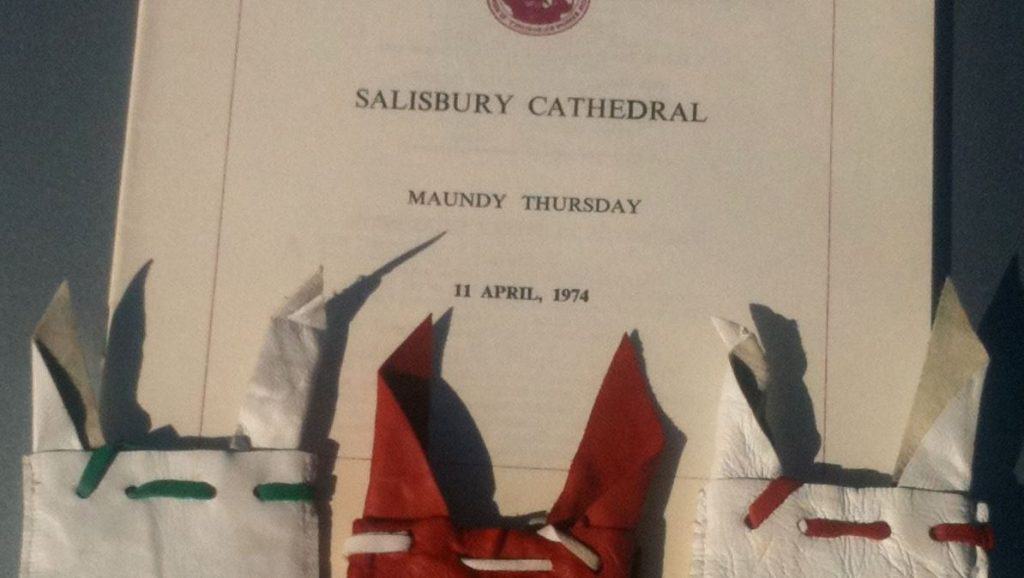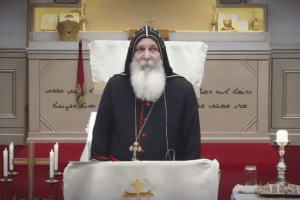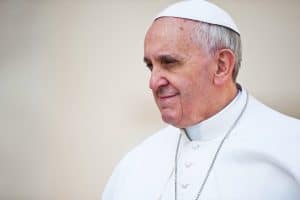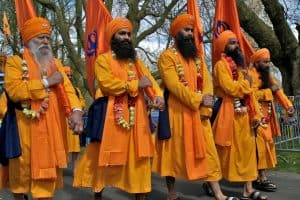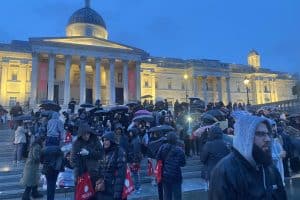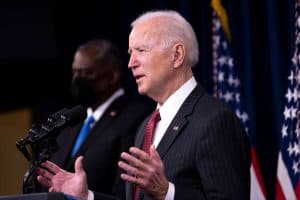The recent announcement that the Queen will not take part in the 2022 Maundy Thursday service is unprecedented. It has been a fixture in her religious calendar throughout her 70-year reign. Her place will be taken by Prince Charles.
While people assume that she is following in the footsteps of other royal monarchs, none of them was ever as assiduous as she has been in maintaining the tradition. It is a ritual that expresses her belief in what being a Christian monarch is about.
The service takes place to commemorate the Last Supper of Jesus and his disciples when they gathered together for a meal before he was arrested, tried and crucified.
While the Christian sacrament of communion is linked to that meal where Jesus gave bread and wine to his followers, saying “do this in memory of me”, English monarchs commemorated in the Maundy service another moment that night – when Jesus washed the feet of his disciples.
This was seen as an act of love and humility – imagine cleaning those filthy, dusty feet in a desert land – and commemorating it was also seen as a way that the monarch could express his or her humility as well.
Medieval monarchs first practised by Maundy service ritual by washing the feet of the poor and giving alms to them. The first king recorded as doing so was John, who gave clothing, forks, food and other items to the poor in Yorkshire. Then in 1213, at a ceremony in Rochester, he gave 13 pence to 13 men, a number that was a reminder of Jesus and his 12 apostles.
Other monarchs followed, with Henry IV beginning the tradition that the number of pence given should reflect the monarch’s age.
Some monarchs took the ceremony particularly seriously. Queen Mary I washed the feet of 41 women in 1556, the year of her 41st birthday, and also gave them 41 pence each plus other gifts of bread, fish, and clothes, including her own gown.
Later, court officials would wash the feet of the poor first before the monarch had to endure doing it. Charles II, after the Restoration, attended even during the plague years of 1661 and 1663.
In later years foot-washing was completely out and so was the involvement of the monarch. Instead an almoner would participate.
By the 20th century, members of the royal family would attend, particularly Princess Helena, Queen Victoria’s third daughter, and her own daughter, Princess Marie Louise.
After Marie Louise’s attendance in 1931, she suggested that her cousin, George V, should distribute Maundy money the next year. Although he agreed, it was the only time he did so.
Edward VIII did the one Holy Week that he was king in 1936, while George VI’s plans to do so were interrupted by the Second World War.
The current Queen began the habit of taking the service around the country to different cathedrals. The service, though, always follows a similar pattern, with two New Testament readings. One is John 13:14 with its mandatum “I have set you an example that you should do as I have done for you” from which Maundy Thursday gets its name, and the other is Matthew: 25:34-40, with its verse: “just as you did it to one of the least of these who are members of my family, you did it to me”.
There are two gifts: a white leather bag containing special Maundy coins and a red leather one containing other money.
A man and a woman are chosen for each year of the Queen’s age, and the money also represents the years she has lived. The recipients are usually people being recognised for their service to the community.
Six silver dishes are used to hold the gifts; one, the traditional Maundy Dish, forms part of the regalia used at coronations and is held at the Tower of London when not in use. All six dishes date from the reign of Charles II.
Anthems are sung by the choir of the Chapel Royal and the local cathedral choir while the Maundy gifts are distributed, ending with Handel’s Zadok the Priest, based on the Bible’s First Book of Kings, also used at the coronation. It is a reminder, each year, of the monarch’s crowning and the links of the British monarchy to scripture and its ideas of kingship.
For the Queen, at 95, and with mobility issues, the Maundy service would certainly be taxing, standing for a considerable time as she distributes the gifts.
Its importance, for her and the nation, is that it is the one occasion when she goes out to the people to offer gifts, rather than the usual tradition of them coming to her to be given awards and honours.
The Queen’s decision to take the tradition around the country was also full of symbolism — the equivalent of a pilgrimage — that has lasted throughout the 70 years of the reign of Britain’s longest serving monarch.
Catherine Pepinster is author of Defenders of the Faith: the Monarchy, Religion and the Next Coronation to be published in June by Hodder Faith

